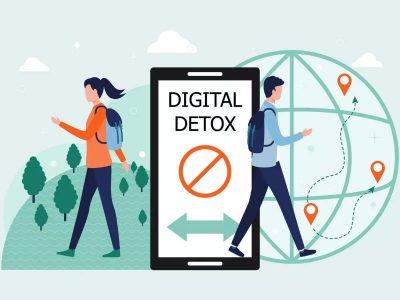Digital Detoxification at the Workplace

Digital detox is not a new concept, but it is evolving. Corporate culture and workplace technology are intricately linked after the pandemic, and their effects on employee’s health and happiness.
Digital overuse can harm our relationships, mental health, and even our sleeping patterns. At work, however, we constantly discuss digital transformation, task automation, accelerating, and other related topics. Given the current scenario, we can’t get enough technology. We are finding it increasingly difficult to unplug from the environment of physical distance and remote working.
Various studies have shown that anxiety and stress rise with the increased use of smartphones. Aetna International’s study of the Digital Health Dilemma found that in the USA, UK, UAE and Singapore
- 64% of employees worry about using their phones too much (for work).
- 61% of employees agree that pressure to answer calls and emails outside of work makes them more stressed.
- 66% of employees admit that checking their phone for work-related messages can make them feel stressed (which they do before they go to bed (64%) and first thing in the morning (70%).
Additionally, most employees concur that having the option to work remotely will enhance their quality of life, but it blurs the boundary between work and personal life. Furthermore, it is evident that excessive use of technology at work and a lack of boundaries or rules for the workday are harming both our productivity and mental health. For instance, employees use different work-related tools or productivity apps to track their projects or organize their workload.
Solutions for a digital detox at work
It is essential to recognise the signs of the digital detox or the new term ‘always on’ – unplugging from devices, coming offline and turning off notifications, which can help improve physical and mental health, sleep and even increase productivity.
- Screen Breaks: Limit screen time at work to 5-15 minutes would improve the employee’s ability to manage their mental health. This will also reduce stress, improve posture, and increase alertness.
- Use digital work-related tools to manage productivity, as these days, there are in-built modes in the smartphone-zen mode & work-life balance mode.
- Set communications: Employees shouldn’t be available 24/7, 7 days a week. Encourage your teams to refrain from monitoring their work email or chat platforms after their shift ends, on weekends, and vacations.
In the modern world, a complete digital detox is impossible, but we could take small steps & change our habits. At an individual level, people can choose their way to detox. At the workplace, employers need to create a healthy working environment that prioritises mental health without jeopardising digital innovation.
Saloni Goyal, Account Executive, VeKommunicate
